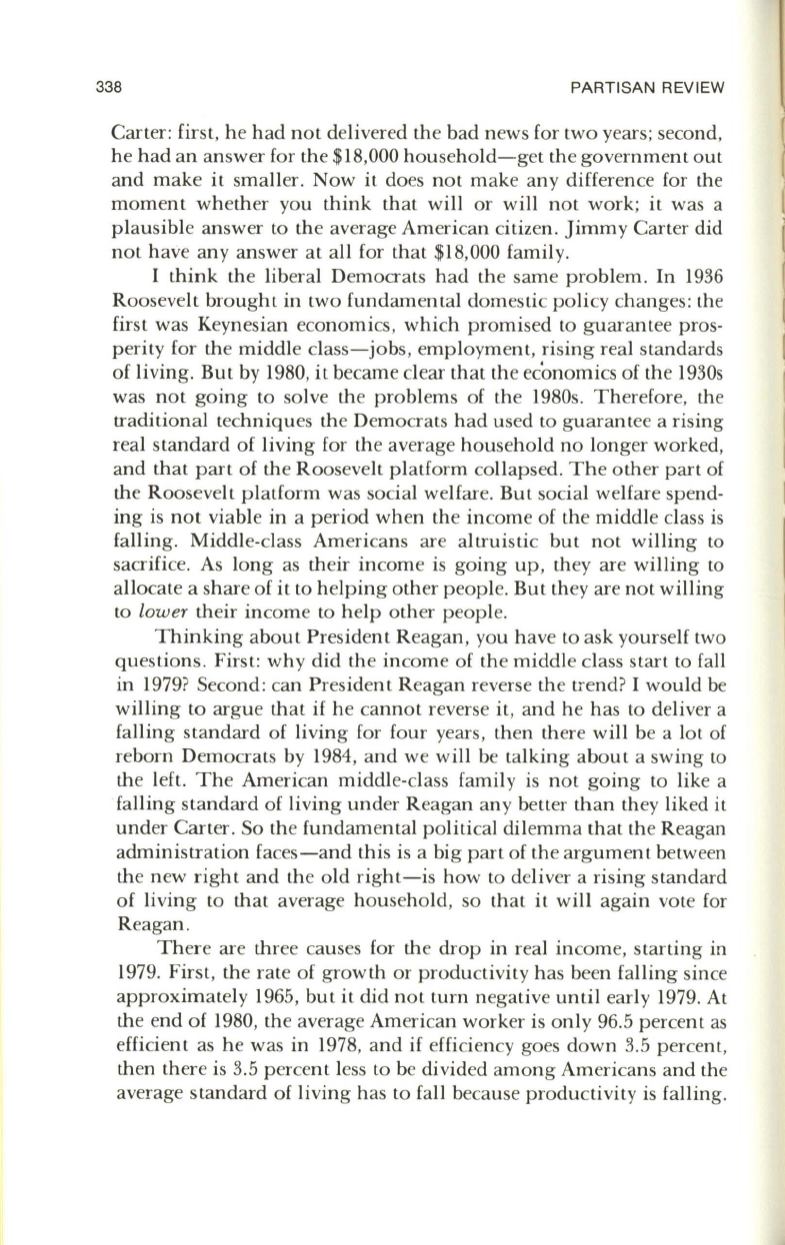
338
PARTISAN REVIEW
Carter: first, he had not delivered the bad news for two years; second,
he had an answer for the $18,000 household-get the government out
and make it smaller. Now it does not make any difference for the
moment whether you think that will or will not work; it was a
plausible answer to the average American citizen. Jimmy Carter did
not have any answer at all for that $18,000 family.
I think the liberal Democrats had the same problem.
In
1936
Roosevelt brought in two fundamental domestic policy changes: the
first was Keynesian economics, which promised to guarantee pros–
perity for the middle class-jobs, employment, rising real standards
of living. But by 1980, it became clear that the economics of the 1930s
was not going to solve the problems of the 1980s. Therefore, the
traditional techniques the Democrats had used to guarantee a rising
real standard of living for the average household no longer worked,
and that part of the Roosevelt platform collapsed. The other part of
the Roosevelt platform was social welfare. But social welfare spend–
ing is not viable in a period when the income of the middle class is
falling. Middle-class Americans are altruistic but not willing to
sacrifice. As long as their income is going up, they are willing to
allocate a share of it to helping other people. But they are not willing
to
lower
their income to help other people.
Thinking about President Reagan, you have to ask yourself two
questions. First: why did the income of the middle class start to fall
in 1979? Second: can President Reagan reverse the trend? I would be
willing to argue that if he cannot reverse it, and he has to deliver a
falling standard of living for four years, then there will be a lot of
reborn Democrats by 1984, and we will be talking about a swing to
the left. The American middle-class family is not going to like a
falling standard of living under Reagan any better than they liked it
under Carter. So the fundamental political dilemma that the Reagan
administration faces-and this is a big part of the argument between
the new right and the old right-is how to deliver a rising standard
of living to that average household, so that it will again vote for
Reagan.
There are three causes for the drop in real income, starting in
1979. First, the rate of growth or productivity has been falling since
approximately 1965, but it did not turn negative until early 1979. At
the end of 1980, the average American worker is only 96.5 percent as
efficient as he was in 1978, and if efficiency goes down 3.5 percent,
then there is 3.5 percent less to be divided among Americans and the
average standard of living has to fall because productivity is falling.


